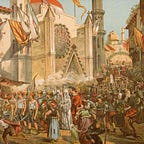Child labor in India
In 2011 , the national census of India found that the total number of child labourers, aged [5–14], to be at 10.1 million, out of the total of 259.64 million children in that age group.[2] The child labour problem is not unique to India; worldwide, about 217 million children work, many full-time.[3]
As per the Child and Adolescent Labour (Prohibition and Regulation) Act, 1986, amended in 2016 (“CLPR Act”), a “Child” is defined as any person below the age of 14, and the CLPR Act prohibits employment of a Child in any employment including as a domestic help. It is a cognizable criminal offence to employ a Child for any work. Children between age of 14 and 18 are defined as “Adolescent” and the law allows Adolescent to be employed except in the listed hazardous occupation and processes which include mining, inflammable substance and explosives related work and any other hazardous process as per the Factories Act, 1948.[4] In 2001, an estimated 1% of all child workers, or about 1,20,000 children in India were in a hazardous job.[5] Notably, the Constitution of India prohibits child labour in hazardous industries (but not in non-hazardous industries) as a Fundamental Right under Article 24.[6] UNICEF estimates that India with its larger population, has the highest number of labourers in the world under 14 years of age, while sub-Saharan African countries have the highest percentage of children who are deployed as child labourers.[7][8][9] The International Labour Organization estimates that agriculture, at 60 percent, is the largest employer of child labour in the world,[10] while the United Nations Food and Agriculture Organization estimates 70% of child labour is deployed in agriculture and related activities.[11] Outside of agriculture, child labour is observed in almost all informal sectors of the Indian economy.[12][13][14]
Companies including Gap,[15] Primark,[16] Monsanto[17] have been criticised for child labour in their products. The companies claim they have strict policies against selling products made by underage children for their own profit, but there are many links in a supply chain making it difficult to oversee them all.[17] In 2011, after three years of Primark’s effort, BBC acknowledged that its award-winning investigative journalism report of Indian child labour use by Primark was a fake. The BBC apologised to Primark, to Indian suppliers and all its viewers.[18][19] Another company that has come under much scrutiny was Nike. Nike was under pressure to speak up about alleged sweatshops that harbored children that the company was exploiting to make their sneakers. Since then Nike has come out with a separate web page that specifically points out where they get their products from and where their products are manufactured.
In December 2014, the U.S. Department of Labor issued a List of Goods Produced by Child Labor or Forced Labor and India figured among 74 countries where a significant incidence of critical working conditions has been observed. Unlike any other country[clarification needed], 23 goods were attributed to India, the majority of which are produced by child labour in the manufacturing sector.
In addition to the constitutional prohibition of hazardous child labour, various laws in India, such as the Juvenile Justice (care and protection) of Children Act-2000, and the Child Labour (Prohibition and Abolition) Act-1986 provide a basis in law to identify, prosecute and stop child labour in India.
If you liked this article do follow me on twitter @mahaskasnaij
